Zoom has become the most sought after video conferencing service. But its meteoric rise in popularity has exposed serious privacy flaws. Problems with account takeover, password theft, relentless trolling (Zoombombing), malware-like behavior, etc. caused Zoom to end up being banned from use by various private and public institutions.
Contents1. Download Zoom app from official website only2. Use a separate email account3. Update these Zoom4 apps. Use your web browser instead5. Protect your personal meeting ID6. Use a random meeting ID7. Change meeting passwords8. Remove passwords from invitations9. Enable waiting rooms10. Only users with accounts can register through the Web11 client. Allow only logged in users to join12. Lock your meeting13. Limit Screen Sharing to Host14. Prepare before screen sharing15. Mute participants at the entrance16. Disable audio/video when connecting17. Prevent participants from recording the chat18. Prevent deleted participants from joining19. Disable file transfers20. Select Zoom21 servers. Use virtual backgroundStay private, stay safe
To Zoom's credit, the developers ended up patching most of the vulnerabilities I just mentioned. Zoom even ended up being banned again. But it's still not perfect, and there are a lot of things to consider to protect your privacy when using Zoom.
Below, I've put together a quintessential list of privacy tips, settings, and options that should make your Zoom experience more private. If you want to minimize the risk of your privacy being compromised or want to have better meetings without being Zoombombed in the process, then let's get started.
Note: Most of the Zoom settings and options listed below can only be accessed through the My Account portal on Zoom.us.
On desktop computers, be sure to get Zoom directly from its official download center on the Zoom.us website. With Zoom becoming incredibly popular, bad actors have created modified versions of the teleconferencing tool that may end up infecting your computer with malware, cryptocurrency miners, or malicious code.
Never download Zoom from a third-party website. And never follow a link from an email to a download source – there's a good chance it's phishing you for personal information.
Until recently, Zoom users with matching email domains could search and find each other by name. This was an implementation to make it easier to find colleagues in the workplace and did not affect major webmail providers such as Gmail and Outlook.
But it has impacted the accounts of relatively unknown email providers. Thus, complete strangers could find other people's email addresses, profile pictures and statuses quite easily.
Although this is not possible now, it is best to use a separate email address just for Zoom itself to avoid similar issues in the future.
Zoom releases frequent updates to address privacy and security issues. So be sure to keep your Zoom apps up to date. On desktop, sign in to Zoom and it will prompt you to update to the latest version, if available.
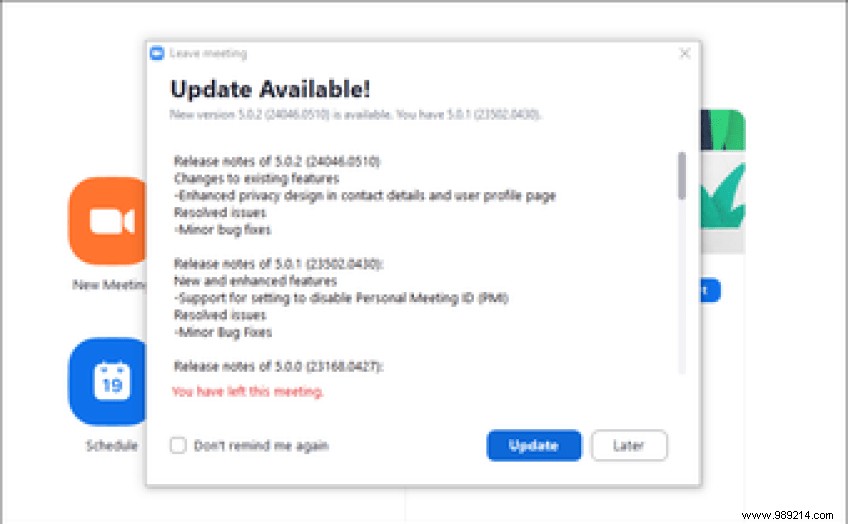
On mobile, simply search for the app on the App Store or Play Store and tap Update to install the latest updates.
If you're unsure about installing Zoom on your PC or Mac, or if you can't update the Zoom app for some reason, use the Zoom web client instead. It is more secure due to the sandboxed nature of web browsers and does not require any updates.
Go to the Zoom.us My Account portal, start or join a meeting, then click the "Start from your browser" link instead of opening the Zoom app.
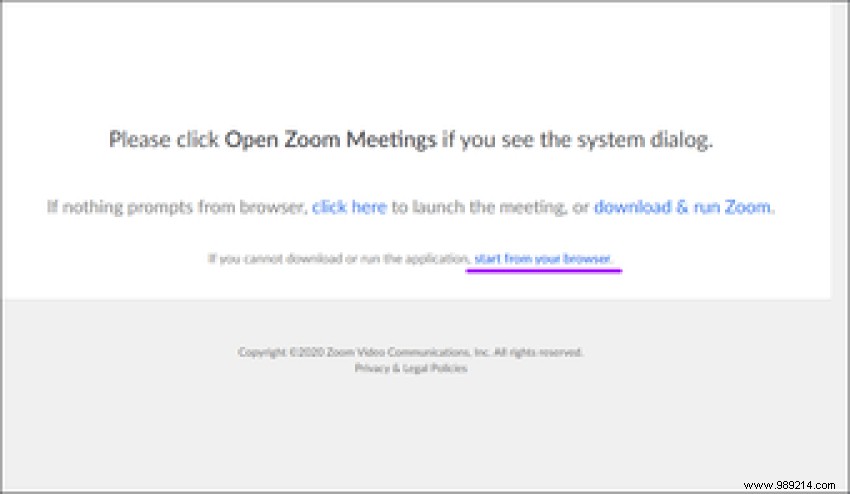
The Zoom web client offers only basic functionality compared to the Zoom app, but if privacy is a major concern, it's always wise to choose the former over the latter.
Note: On mobiles, this is not an option as the Zoom web client does not work well on browsers.
Zoom assigns you a Personal Meeting ID (PMI). It's like a private phone number in essence and points to your own personal meeting room. Therefore, it is best not to disclose this number in public forums or social media.
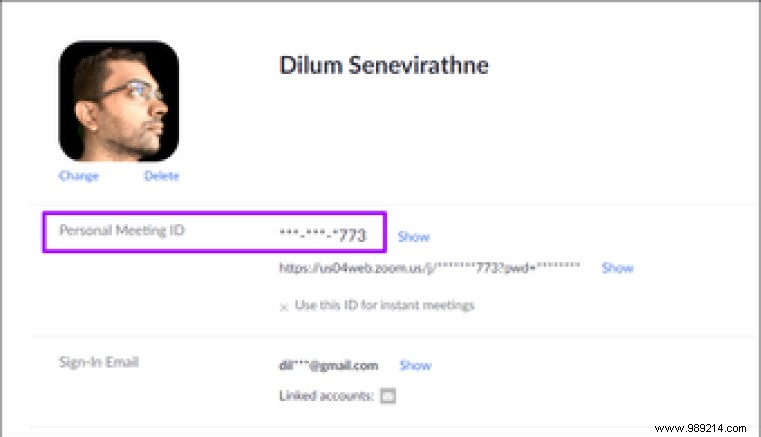
Rather than compromising your personal meeting ID, you can use an automatically generated ID when scheduling. If you want to host a meeting with people outside of your usual circle, it is always better to choose this option rather than using your PMI.
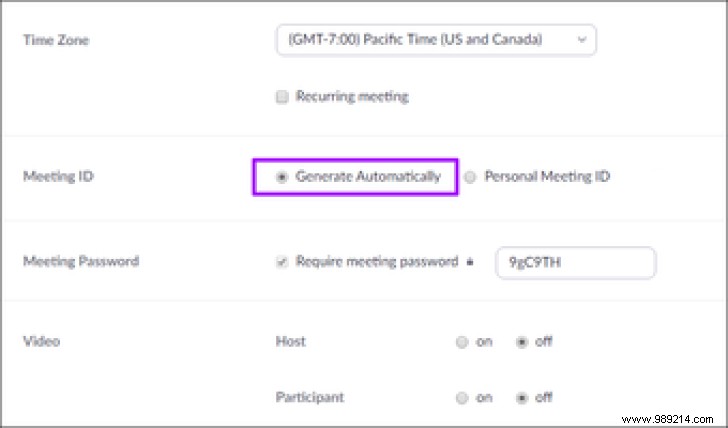
Until a while ago, Zoom didn't protect meetings with passwords by default. This didn't go down too well since anyone could join meetings and go on a Zoombombing spree to ruin your day.
Although Zoom automatically password protects your meetings now, you can still change it in case meeting details are leaked to the wrong people. Choose a scheduled meeting in the Zoom app, then click or tap Edit this meeting to change the password.
Zoom includes passwords in your invitations by default. Moreover, they are encoded in the URL of the meeting itself to allow participants to join faster without even having to insert the password.
Unless you are absolutely certain that none of your contacts will end up sharing the link with others, you can prevent this by visiting Zoom.us settings and disabling "Embed password in link". invitation to join with one click". Obviously, this means that you will have to send your password separately.
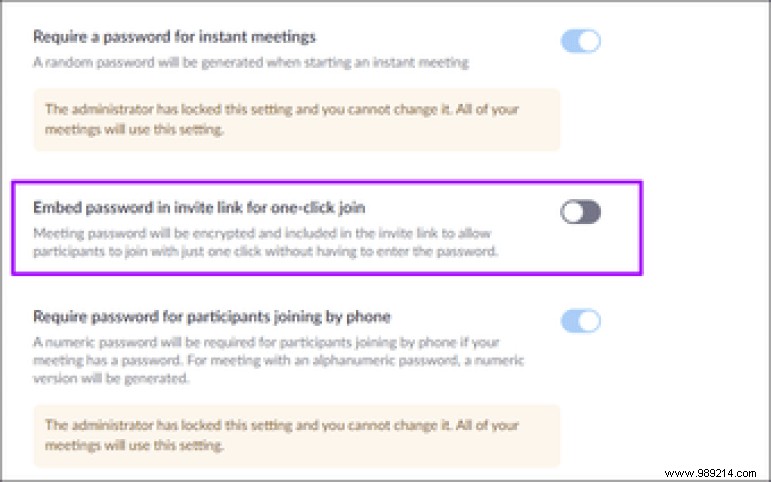
Zoom's Waiting Room allows you to screen participants before admitting them to your meetings. This option is enabled by default, but it doesn't hurt to check when scheduling a meeting. You can also enable or disable this option during meetings via the Security menu (on desktops) or the Meeting Settings pane (on mobiles).

Whenever someone tries to join your meeting, tap Admit in the pop-up notification to allow them to join the meeting. You can also view participants in the waiting room via the participant list.
Almost anyone who knows your Zoom meeting ID and password can access a web browser and ruin your meeting. Things can get really messy considering Zoom doesn't even need an account to sign up in the first place.
To at least prevent random strangers without a Zoom account from showing up to your meetings, enable the "Only authenticated users can join meetings from the web client" option in Zoom.us settings.
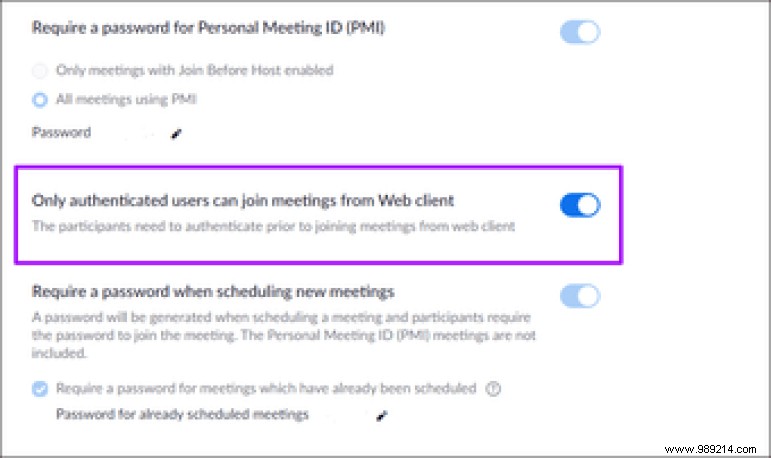
If you're on a paid plan (Pro, Business, Education, or Enterprise) in Zoom, you can further restrict your Zoom meetings to people who are actually logged into their Zoom accounts or people with email addresses in certain domains. /P>
Go to Account Management in Zoom.us Account Settings, then turn on the switch next to "Only authenticated users can join". Then just click on Add configuration and specify the form of authentication required.
Once you have a Zoom meeting in progress, you can prevent people from joining it by locking the meeting. This minimizes the chances of a stranger disturbing it.
Show the Security icon on the desktop app or the Meeting Settings pane on the mobile app, then click or tap Lock Meeting.

Zoom lets you share your screen across any of your devices, which is great for giving presentations. But that doesn't mean your attendees also have to have the same ability.
To prevent others from sharing the screen and potentially disrupting the meeting, go to Zoom.us settings and select Host Only under Screen Sharing.
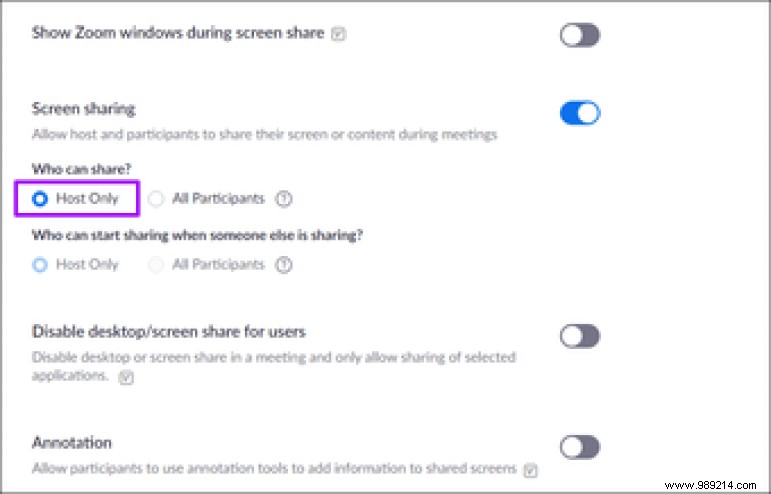
Screen sharing also brings its fair share of privacy-related issues. Just be sure to plan the meeting ahead of time so you don't share any personal details. Disabling notifications (using Focus Assist/Do Not Disturb) is a great place to start.
In some meetings, you may want to get your point across before letting attendees speak. Enable "Mute participants on entry" when scheduling a meeting (or via Zoom.us settings) to mute everyone on entry until you are ready to hear what they want to say.
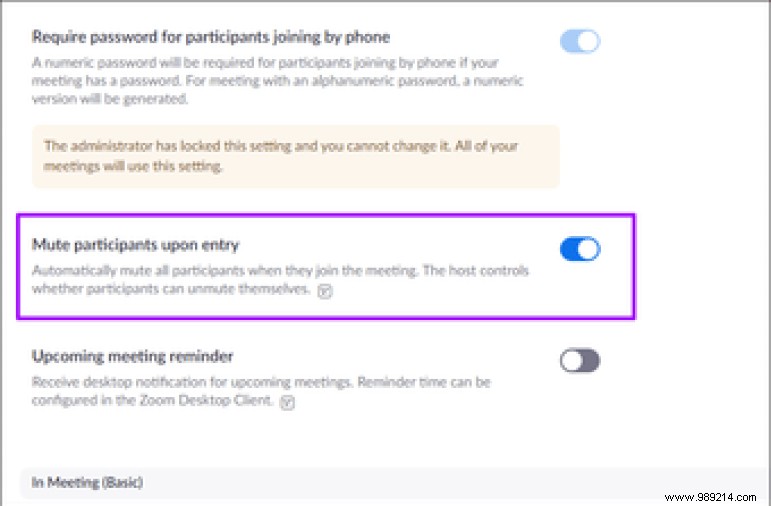
You can also mute your own audio and video when joining a Zoom meeting. This gives you plenty of time to prepare before you show up.
You can access the relevant settings in the Audio and Video tabs of the Settings pane on both desktop and mobile apps.
Zoom's chat boxes allow all kinds of conversations between participants. But if the meeting is confidential in nature, you can prevent others from recording the chat session. Select "Prevent participants from recording chat" via Zoom.us settings.
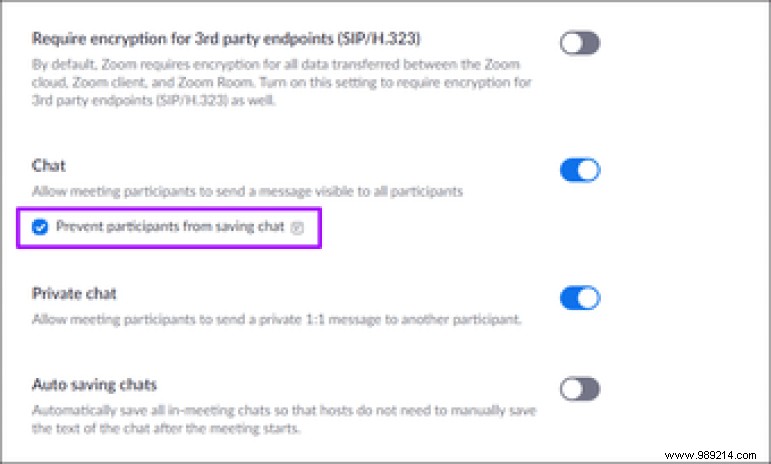
By default, when you exclude a few unwanted attendees from your meetings, they can't join. But if they can? Go to Zoom.us settings and make sure "Allow deleted participants to join" is disabled.
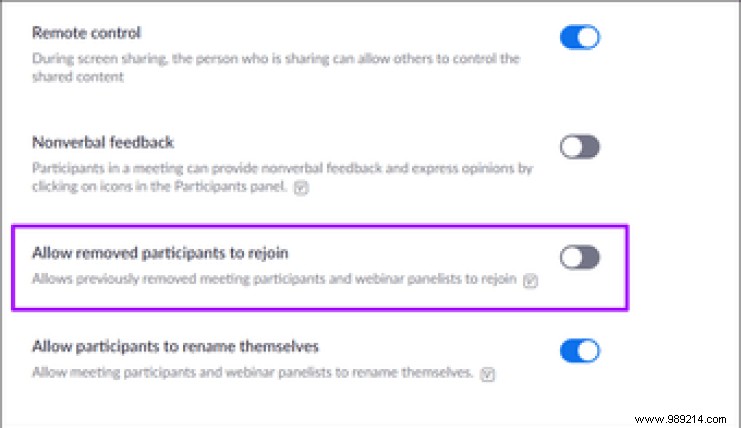
Zoom allows file and document transfers in chats. But what if meetings end in a file-sharing frenzy? It is best to disable this feature unless there is a good reason to use it. Head to Zoom.us settings and turn off the switch next to File Transfer.
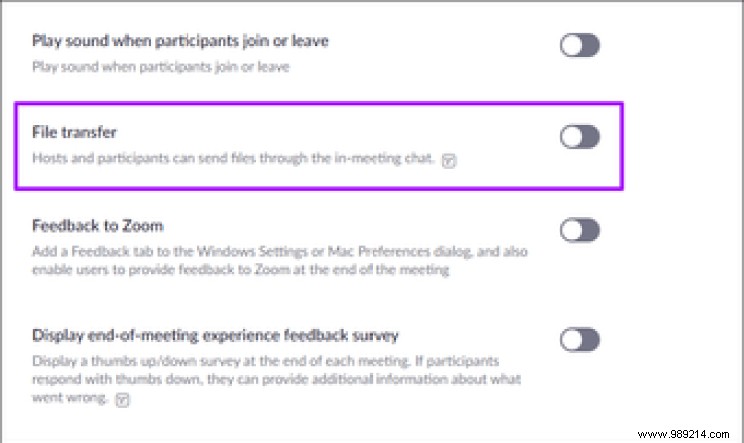
Zoom uses servers located in multiple locations around the world to transfer meeting-related data. But not all countries respect your privacy. If you're on a paid Zoom plan, you can actually determine which countries Zoom routes your data through.
Go to your Zoom.us account settings, turn on the switch next to "Select datacenter regions for meetings/webinars hosted by your account", then select the countries you want to allow Zoom to use for your meetings.
Don't want other participants to know your current location when you host or join a Zoom meeting? Use a virtual background and no one will see your surroundings. Go to Settings in the Zoom app on your desktop or mobile, then select Virtual Background to get started.
By implementing the tips above, you can have a very privacy-focused Zoom experience while simultaneously preventing unwanted attendees from hijacking hosted meetings. But don't stop there -- I also recommend that you carefully browse the settings screens of Zoom.us and the Zoom app for additional features that can help you maintain your privacy. Zoom is also under pressure to make their app even more secure, so keep an eye out for new settings and options.
Then:
Become a pro at using Zoom with our ultimate guide. Check the link below.